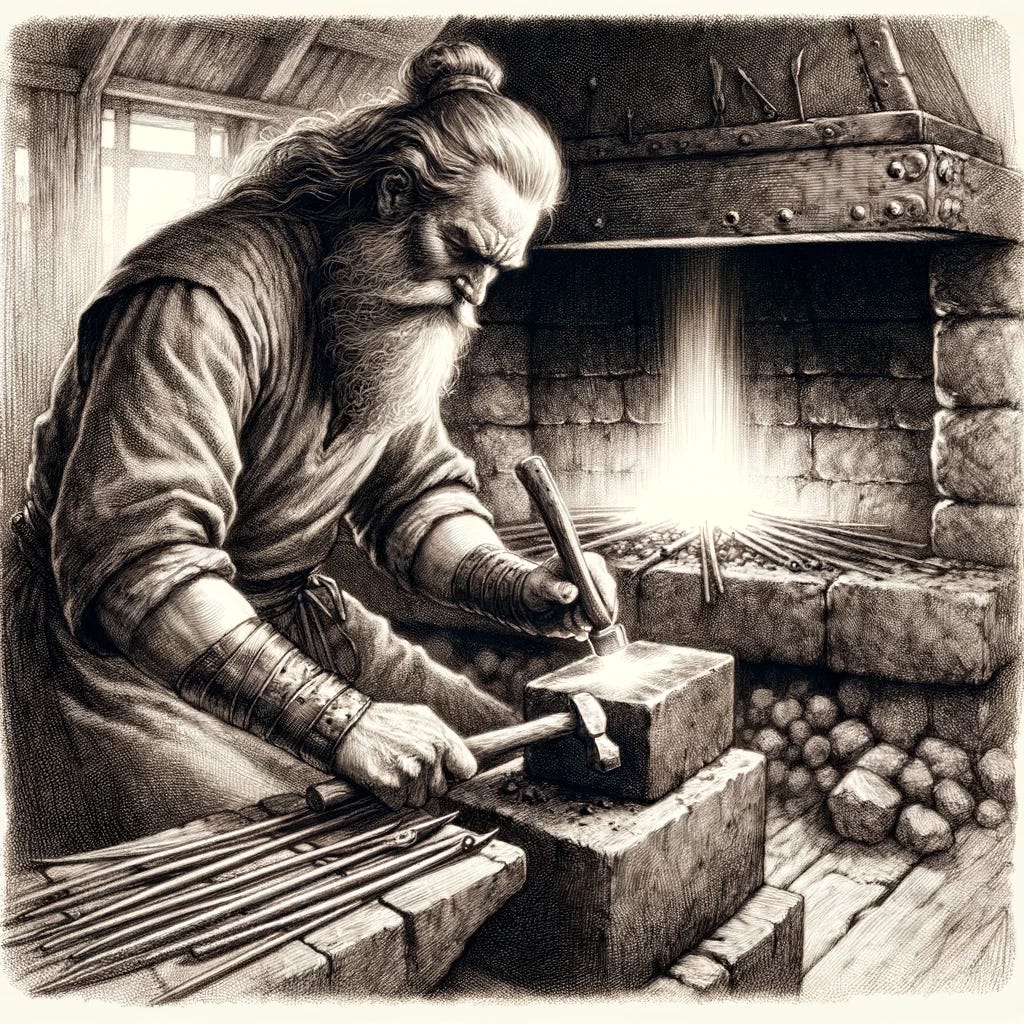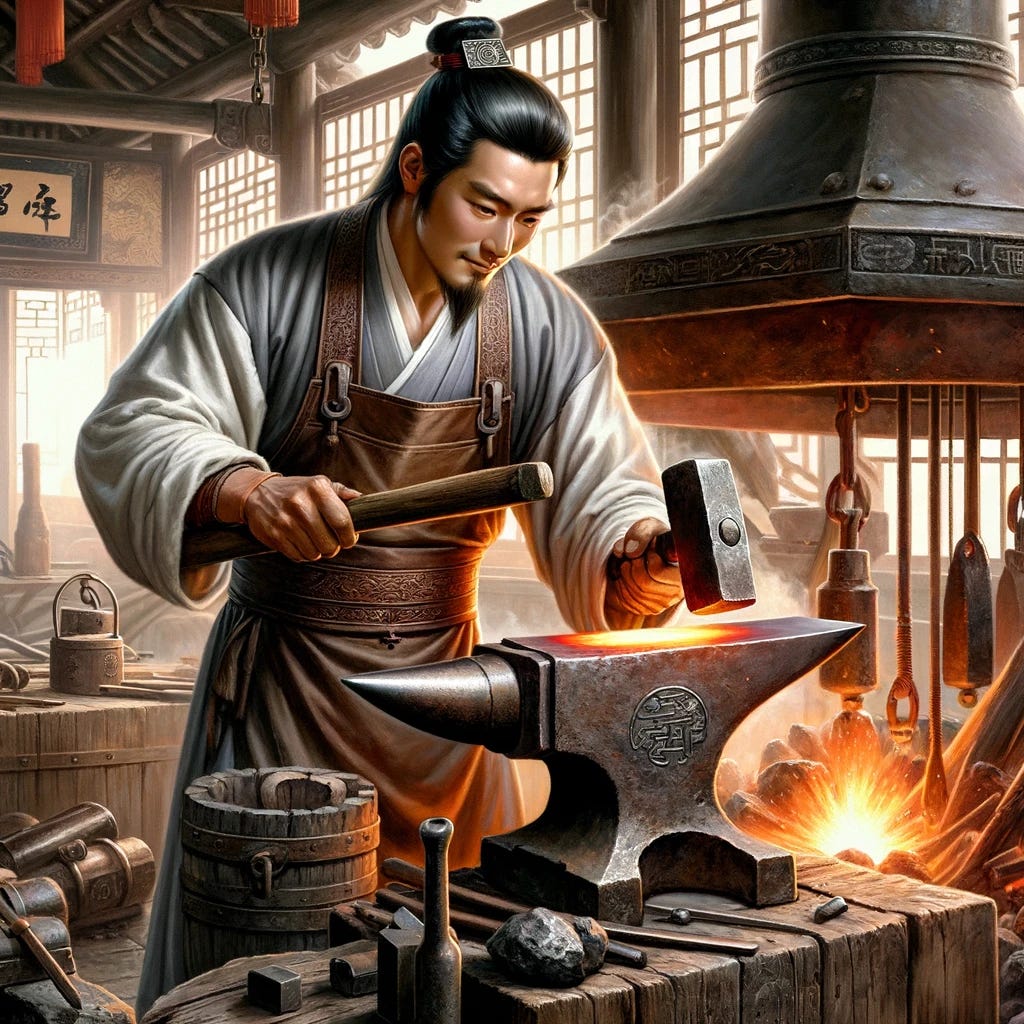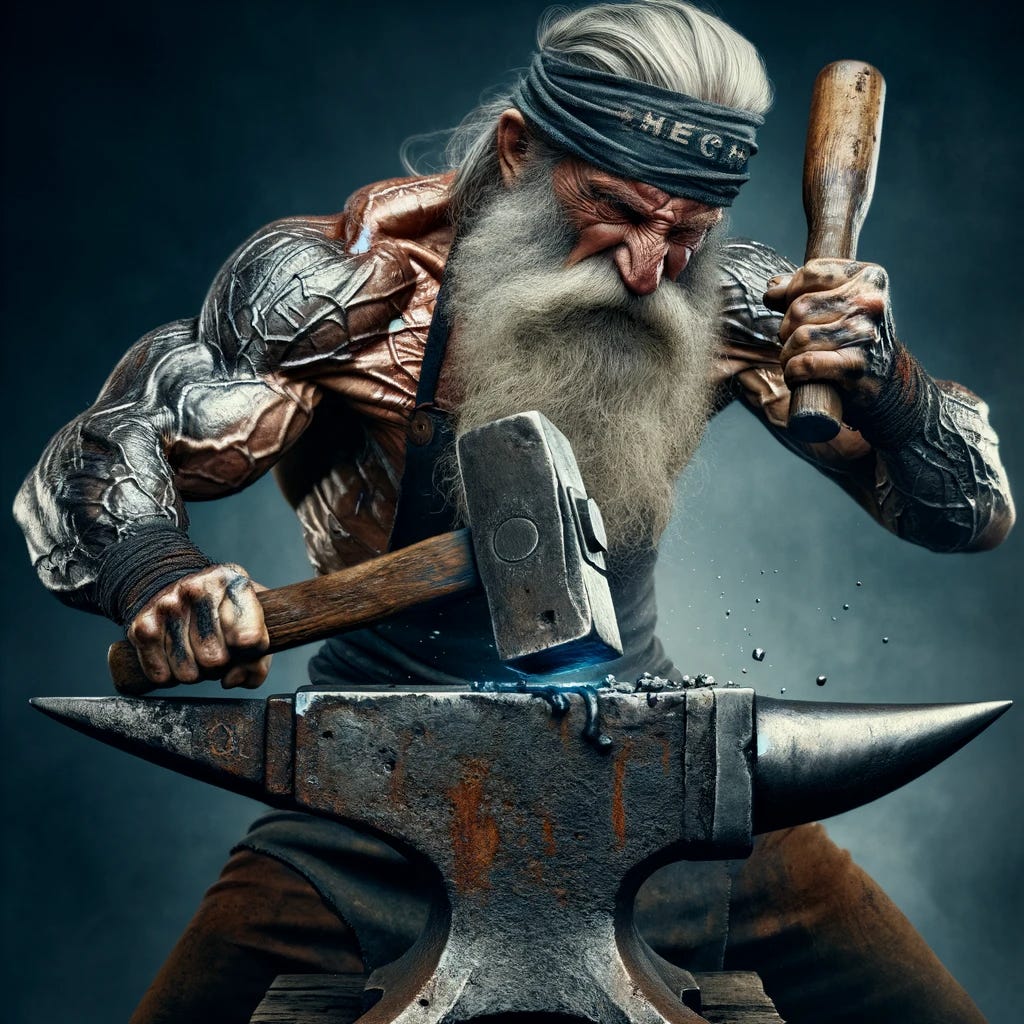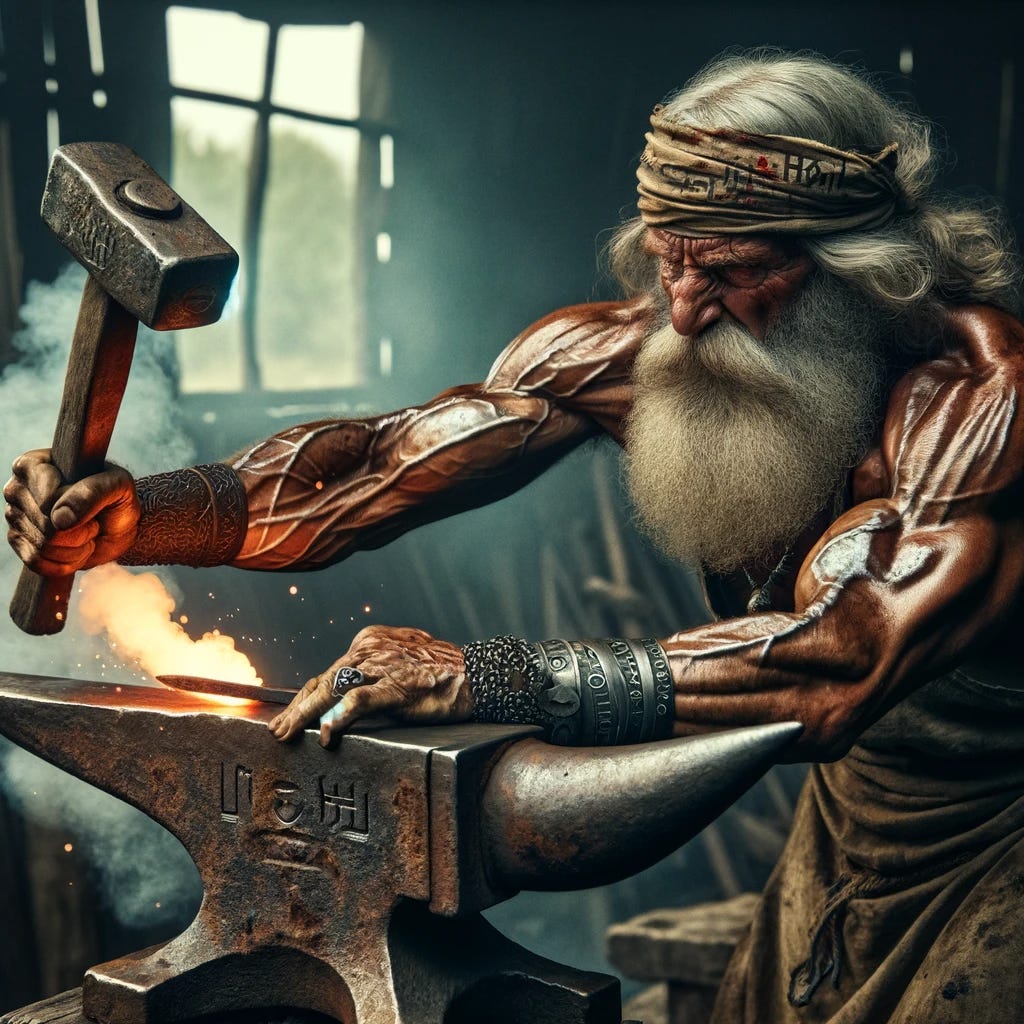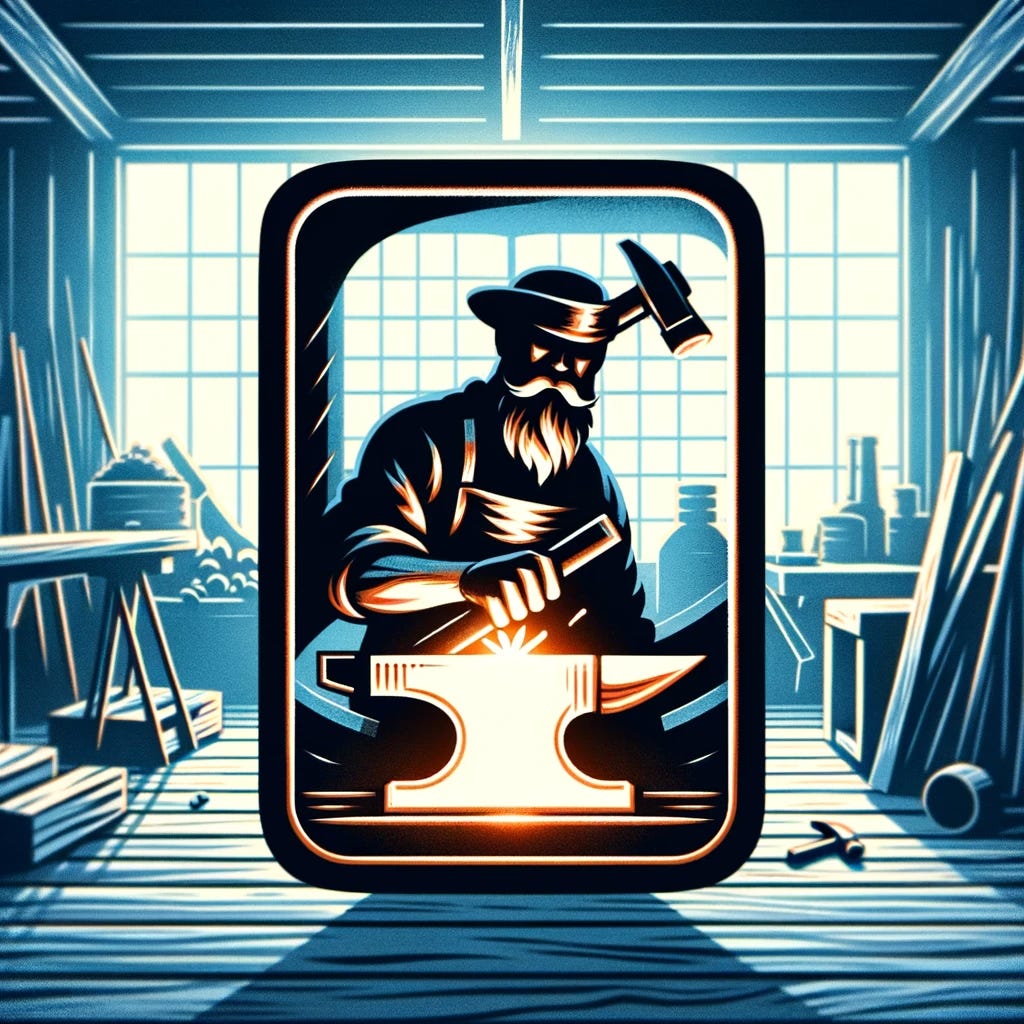Forging the Past: The Timeless Art of Ironsmithing
Diving into the Flames of Tradition: Exploring the Ancient Techniques and Enduring Legacy of Iron Craftsmanship
The craft of ironsmithing is an ancient practice that dates back thousands of years, deeply embedded in human history and pre-dating recorded time. Ironsmiths, also known as blacksmiths when working primarily with black (or wrought) iron, have played a crucial role in the development of human civilization. Their work has spanned from the creation of everyday household items to weapons and agricultural tools that have shaped societies and economies.
A smith is someone that works with metal. An Ironsmith is not the same as a blacksmith. A blacksmith may work with steel and other metals. An Ironsmith is a master craftsman that works only with Iron.
Iron is represented on the periodic table by the symbol "Fe" and has the atomic number 26. It belongs to the group of elements known as transition metals.
Other smiths rely on their input Iron being perfect, or their product is not.
Origins
The use of iron by humans dates back to around 1200 BCE, with the beginning of the Iron Age. This era followed the Stone and Bronze Ages and marked a significant advancement in tool and weapon manufacturing. The earliest evidence of iron smelting and working has been traced back to the Hittites of Anatolia (modern-day Turkey), spreading to the rest of Europe, Asia, and Africa.
Techniques and Tools
Early ironsmiths learned to heat up iron ore in a forge to extract the metal. They discovered that by heating the iron to high temperatures and then hammering it, they could remove impurities and shape the iron into desired forms—a process known as forging. Over centuries, various techniques such as welding, annealing, and quenching were developed to enhance the strength and durability of iron products.
Ironsmithing required a set of specific tools, many of which are still in use today. The essential tools include the forge (to heat the iron), anvil (a hard surface on which to shape the hot iron), hammers (of various sizes and shapes to manipulate the metal), and tongs (to hold the hot metal).
Evolution and Innovation
The craft of ironsmithing saw significant innovations over the centuries. The introduction of water-powered hammers during the medieval period mechanized some processes, increasing productivity. The Renaissance era brought about a deeper understanding of metals and their properties, leading to advancements in metallurgy that further refined the craft.
With the advent of the Industrial Revolution in the 18th and 19th centuries, iron production was revolutionized. The development of new processes such as puddling and rolling mills made iron more available and affordable, leading to the eventual replacement of wrought iron with steel for many applications. Despite this, the craft of traditional ironsmithing persevered, focusing on artistic and custom pieces, restoration work, and the preservation of heritage techniques.
Contemporary Ironsmithing
Today, ironsmiths continue to work, combining ancient techniques with modern technology. They produce a wide range of items, from functional pieces like gates, tools, and hardware to decorative and artistic works. Modern blacksmiths may use both traditional coal forges and gas forges, and while electric welding and cutting tools have supplemented traditional methods, the essence of shaping metal by heating and hammering remains unchanged.
Cultural Impact
Throughout history, ironsmiths have not only been craftsmen but also vital members of their communities, contributing significantly to the economic and social development of societies. Their skills were passed down through generations, often within families or through apprenticeship systems. The craft has had a profound cultural impact, with ironsmiths featuring prominently in mythology, folklore, and religion across various cultures.
The history of the craft ironsmith is a testament to human ingenuity and adaptability. From the earliest days of the Iron Age to the present, ironsmiths have played a pivotal role in shaping the world. Despite the technological advancements that have transformed the craft, the fundamental principles of ironsmithing—heat, hammer, and anvil—remain as relevant today as they were thousands of years ago. The legacy of ironsmithing continues to be preserved and celebrated by craftsmen around the globe, ensuring that this ancient art form endures.



